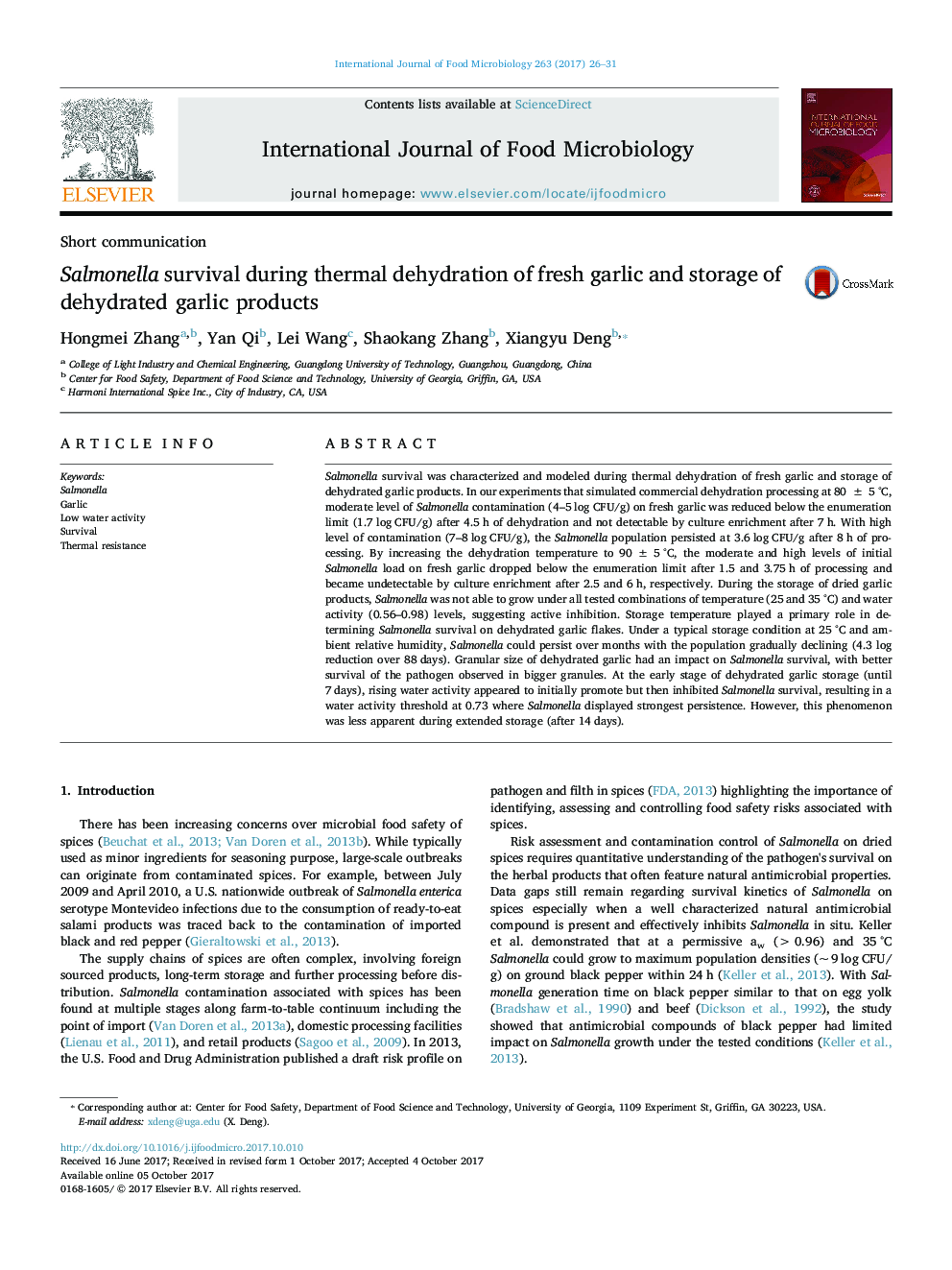| Article ID | Journal | Published Year | Pages | File Type |
|---|---|---|---|---|
| 5740566 | International Journal of Food Microbiology | 2017 | 6 Pages |
â¢Eight-hour dehydration of fresh garlic at 80 ± 5 °C led to about 4 log reduction of Salmonella.â¢Increasing temperature to 90 ± 5 °C promoted Salmonella inactivation during garlic dehydration.â¢No Salmonella growth was observed during the storage of dehydrated garlic.â¢Salmonella could persist over months under a typical storage condition.â¢Better survival of the pathogen was observed on bigger granules of dehydrated garlic.
Salmonella survival was characterized and modeled during thermal dehydration of fresh garlic and storage of dehydrated garlic products. In our experiments that simulated commercial dehydration processing at 80 ± 5 °C, moderate level of Salmonella contamination (4-5 log CFU/g) on fresh garlic was reduced below the enumeration limit (1.7 log CFU/g) after 4.5 h of dehydration and not detectable by culture enrichment after 7 h. With high level of contamination (7-8 log CFU/g), the Salmonella population persisted at 3.6 log CFU/g after 8 h of processing. By increasing the dehydration temperature to 90 ± 5 °C, the moderate and high levels of initial Salmonella load on fresh garlic dropped below the enumeration limit after 1.5 and 3.75 h of processing and became undetectable by culture enrichment after 2.5 and 6 h, respectively. During the storage of dried garlic products, Salmonella was not able to grow under all tested combinations of temperature (25 and 35 °C) and water activity (0.56-0.98) levels, suggesting active inhibition. Storage temperature played a primary role in determining Salmonella survival on dehydrated garlic flakes. Under a typical storage condition at 25 °C and ambient relative humidity, Salmonella could persist over months with the population gradually declining (4.3 log reduction over 88 days). Granular size of dehydrated garlic had an impact on Salmonella survival, with better survival of the pathogen observed in bigger granules. At the early stage of dehydrated garlic storage (until 7 days), rising water activity appeared to initially promote but then inhibited Salmonella survival, resulting in a water activity threshold at 0.73 where Salmonella displayed strongest persistence. However, this phenomenon was less apparent during extended storage (after 14 days).
